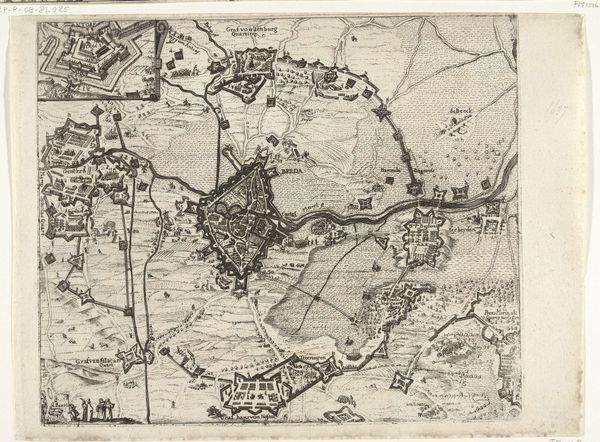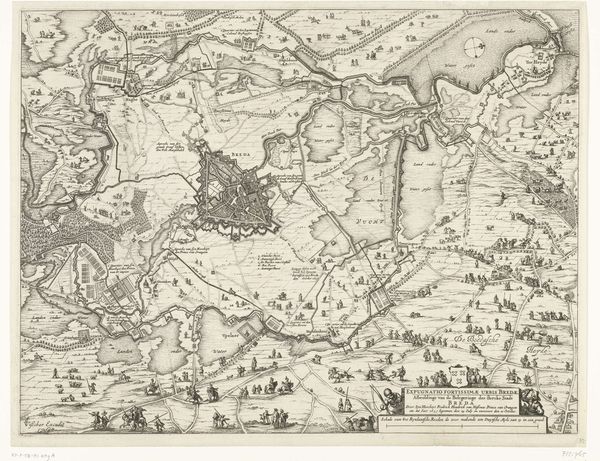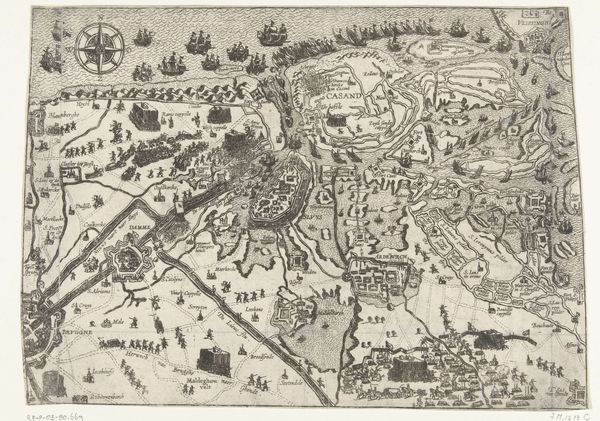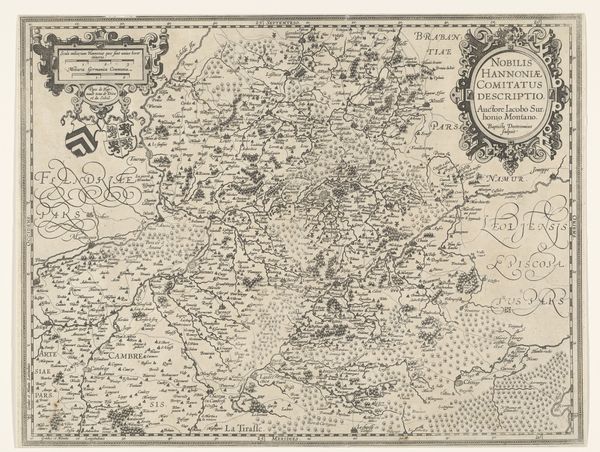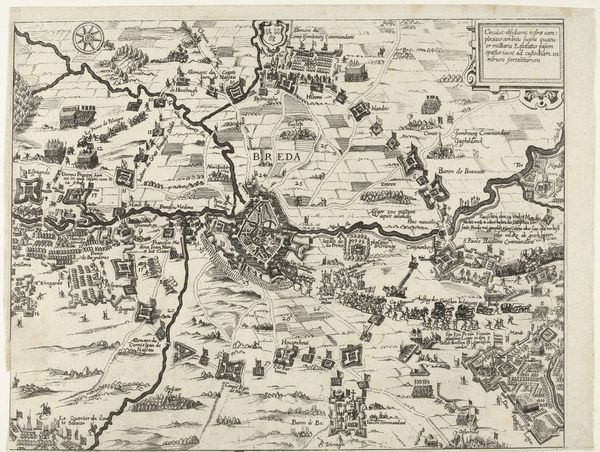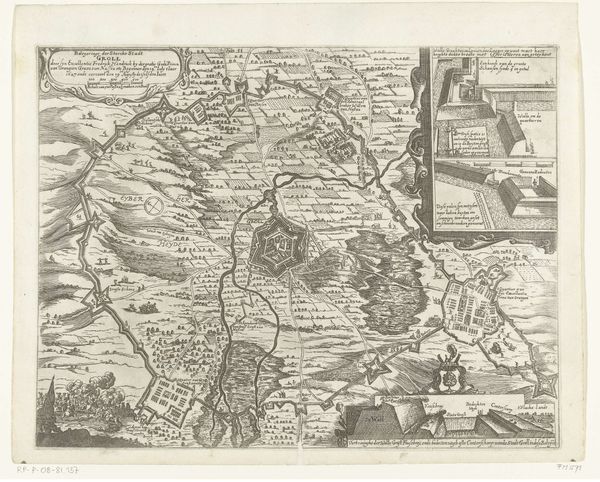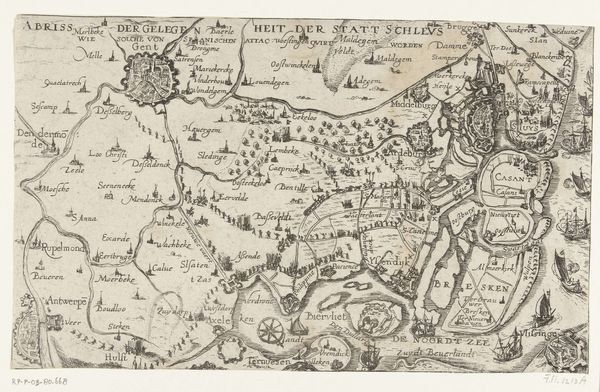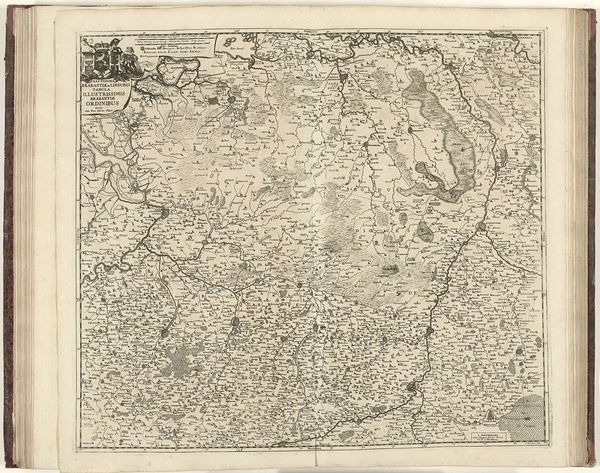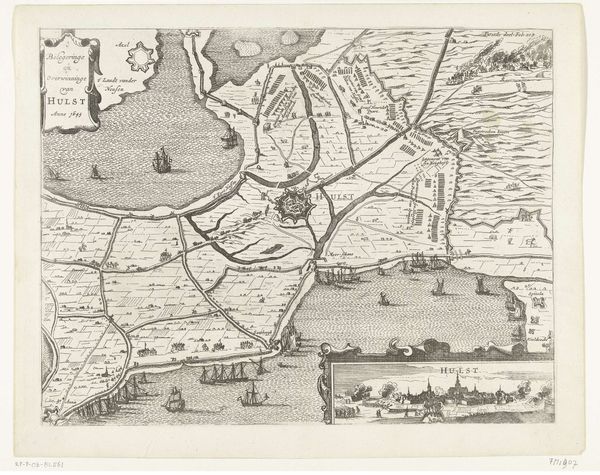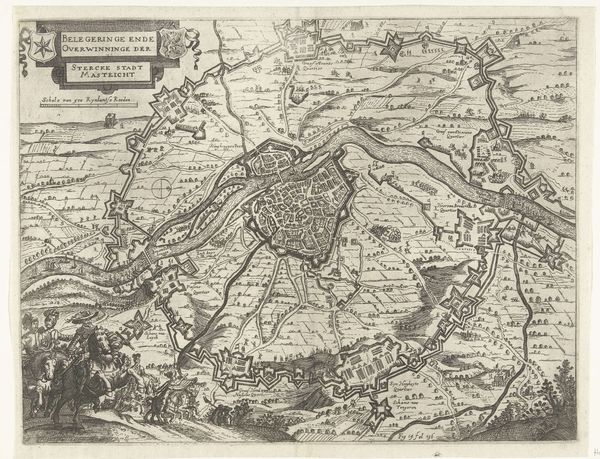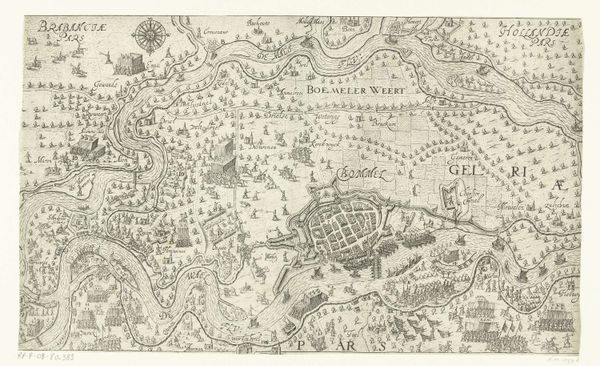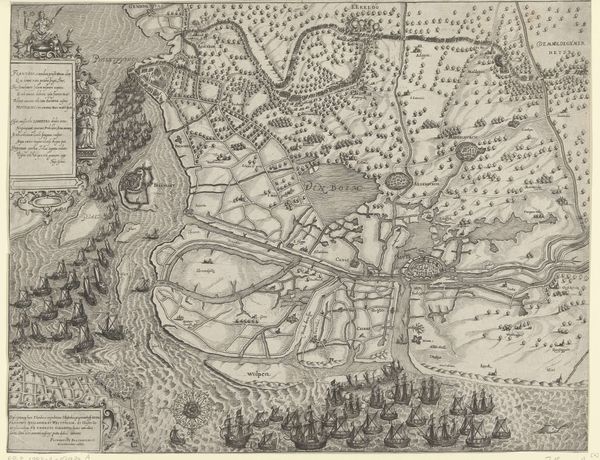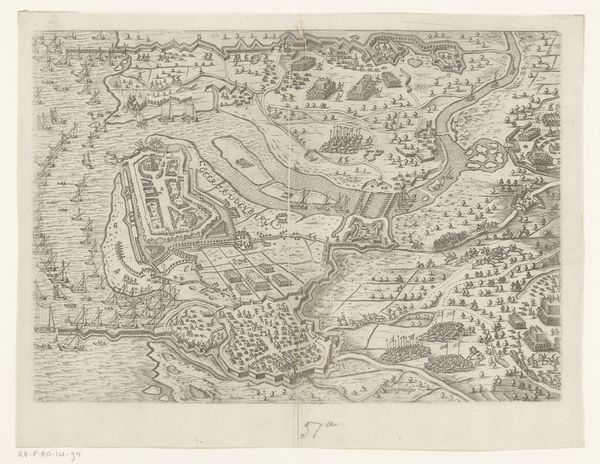
drawing, ink, pen
#
drawing
#
baroque
#
pen drawing
#
landscape
#
ink
#
pen
#
cityscape
Dimensions: height 257 mm, width 605 mm
Copyright: Rijks Museum: Open Domain
Curator: This meticulous pen and ink drawing, created in 1695, is titled “Kaart van Namen en omgeving tijdens het beleg, 1695,” or “Map of Namur and surroundings during the siege, 1695." It is currently held in the collection of the Rijksmuseum. Editor: What a tightly rendered landscape! The linework is just phenomenal. Look at the implied texture, those dense forests suggested by seemingly endless tiny marks! Curator: Precisely. This drawing wasn’t made as a work of art in the modern sense. It’s a historical document, likely commissioned to detail the military strategies during the siege of Namur. Note the careful rendering of fortifications and troop deployments. Editor: Right, the process reveals its purpose. It would've demanded specific skills and resources to produce, and was meant for planning and maybe later, for commemorating power. Pen and ink—accessible yet precise. We tend to think of maps now as these mass-produced items, but this reflects deliberate human labor. Curator: Absolutely. The act of mapping itself is an act of claiming, controlling. Think about who would have had access to this image. Likely only those in positions of power, shaping strategic decisions based on the information depicted here. It speaks to the geopolitics of the period. Editor: So it's almost propagandistic. This intricate layering isn’t just topographic; it tells a story of resources controlled and defenses built. There's almost a tactile quality given the density, creating this very real sense of the built and natural environment being dominated. Curator: Indeed, its material execution, while seemingly utilitarian, served the broader political aim of solidifying power during wartime. The map itself becomes a tool of governance, used to both inform and intimidate. Editor: Viewing the drawing, I can’t ignore its function and the labor involved, especially since now so much of this production is automated. It humanizes, albeit through war, our understanding of landscape control, right? Curator: Ultimately, seeing a piece like this reminds us how inextricably linked artistic creation, even in its most functional forms, can be to broader social and political power structures. Editor: It is a sharp lesson connecting our human interaction and labor to the physical earth, viewed through strategy and strife—and memorialized on paper with meticulous ink.
Comments
No comments
Be the first to comment and join the conversation on the ultimate creative platform.
